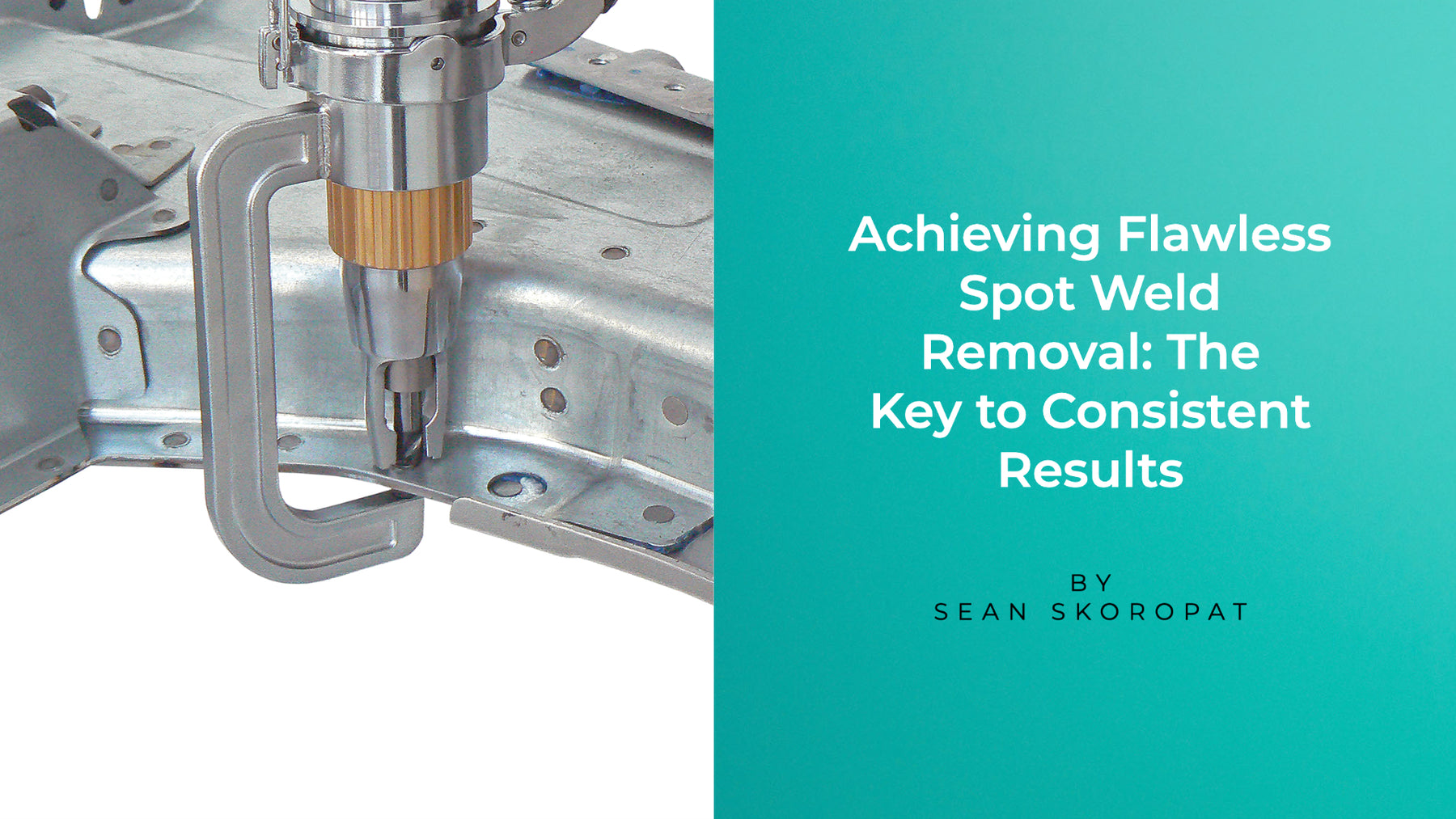
Achieving Flawless Spot Weld Removal: The Key to Consistent Results
Layout and Structure:
- Introduction
- Understanding Spot Weld Drilling/Cutting
- The Ideal Approach: Spot Weld Cutting
- Tools for spot weld cutting
- Introducing the Wielander and Schill Vario Drill WS90 and Dent Fix Spot Annihilator
- Drill Bit Features for Spot Weld Removal
- Specialized tip design and centring guide
- Flute configuration and reduced penetration depth
- Optimal RPM and clamping system
- Ensuring undamaged substrate and high torque
- Benefits of Consistent Spot Weld Removal
- Achieving OEM-certified results
- Minimizing heat-affected zone for occupant safety
- Eliminating inconsistencies for technicians
- Tips for Traditional Drilling (if spot weld cutting is not an option)
- Starting with a small bit and progressing gradually
- Utilizing a center punch and quality drill bits like the Boron Killer
- Optimal RPM and pulsing technique for easier cutting
- The importance of going slow for high-strength steel drilling
- Conclusion
Introduction:
During my recent out-of-province shop visits, an intriguing topic arose - the drilling of high-strength steels and the vital role of bit quality. This made me ponder whether subpar drill bits or outdated drilling techniques were hampering spot weld cutting. Furthermore, are technicians armed with the right tools for the job? In this article, we delve into the drilling process, explore the shift toward spot weld cutting, and introduce specialized tools that yield consistent and flawless results.
Understanding Spot Weld Drilling/Cutting:
In its basic form, drilling involves boring a hole through a panel or material using a tool specifically designed for this purpose. The shift to the replacement of panels will necessitate this removal method. The preference is to remove enough material to facilitate the replacement of the outer panel while preserving the substrate integrity. This slight shift brings us to spot weld cutting, where specialized tools and techniques come into play. Instead of a spiral-fluted drill bit, spot weld cutters resemble machining or milling bits. These tools feature a clamping arm, speed control, center punch, and cutting oil.
The Ideal Approach: Spot Weld Cutting:
To achieve spot weld removal while retaining the integrity of the substrate, two remarkable units come to the forefront: the Wielander and Schill Vario Drill WS90 and the Dent Fix Spot Annihilator, DF-15DX. These OEM-certified staples excel in eliminating spot welds consistently. The specialized drill bits used in these tools differ from traditional ones. Their tips incorporate a small centring guide, while the cutting flutes are ground close to a flat plane, reducing depth penetration. With a maximum of 900 RPM (reduced to 300-500 RPM with a reducer), these tools are perfectly suited for spot weld removal. Additionally, the clamping system ensures consistent pressure, minimizing walking or vibration. The depth is meticulously set to preserve the substrate, while high torque and constant pressure, aided by lubricating oil, make spot weld cutting considerably easier. By employing these tools, technicians eliminate potential inconsistencies in speed, pressure, depth, and centring, enabling them to deliver consistent, repeatable results that meet OEM standards.
Benefits of Consistent Spot Weld Removal:
Consistency and repeatability are paramount for original equipment manufacturers (OEMs). Spot welds are crucial in minimizing the heat-affected zone (HAZ) and ensuring the replacement panels and integrated safety cage effectively protect vehicle occupants. Specialized spot weld removal tools remove the guesswork and variables, empowering technicians to achieve the desired results consistently. This recommendation is not meant to diminish the skills technicians have honed but rather to offer solutions that keep pace with the rapidly changing repair landscape of the past decade.
Tips for Traditional Drilling (if spot weld cutting is not an option):
In cases where spot weld cutting is not feasible, traditional drilling methods can still be employed effectively. Here are some tips to make the job easier and more efficient:
- Begin with a small drill bit and gradually increase the size.
- Always use a center punch to ensure precise drilling.
- Opt for high-quality drill bits like the Boron Killer, which may benefit from cutting oil.
- Utilize a drill capable of reduced RPM (typically 1000 RPM or less).
- Employ the pressure on/off method: apply pressure, trigger the drill, release, and repeat. Pulsing the drill can make cutting the material easier, akin to tapping a hole. Going slow in high-strength steel drilling yields the desired result and ultimately speeds up the completion of the job.
Conclusion:
Achieving flawless spot weld removal is crucial in collision repair, and the choice of tools and techniques dramatically impacts the outcome. By embracing spot weld cutting with specialized tools like the Wielander and Schill Vario Drill WS90 and the Dent Fix Spot Annihilator DF-15DX, technicians can deliver consistent, repeatable results that align with OEM requirements. Alternatively, implementing the tips provided ensures a smoother process when traditional drilling is the only option. Remember, in the realm of drilling high-strength steels, going slow can be the key to achieving desired results and completing the job efficiently.
By Sean Skoropat (West-Coast Representative)
Titanium Tools and Equipment Inc.

Leave a comment